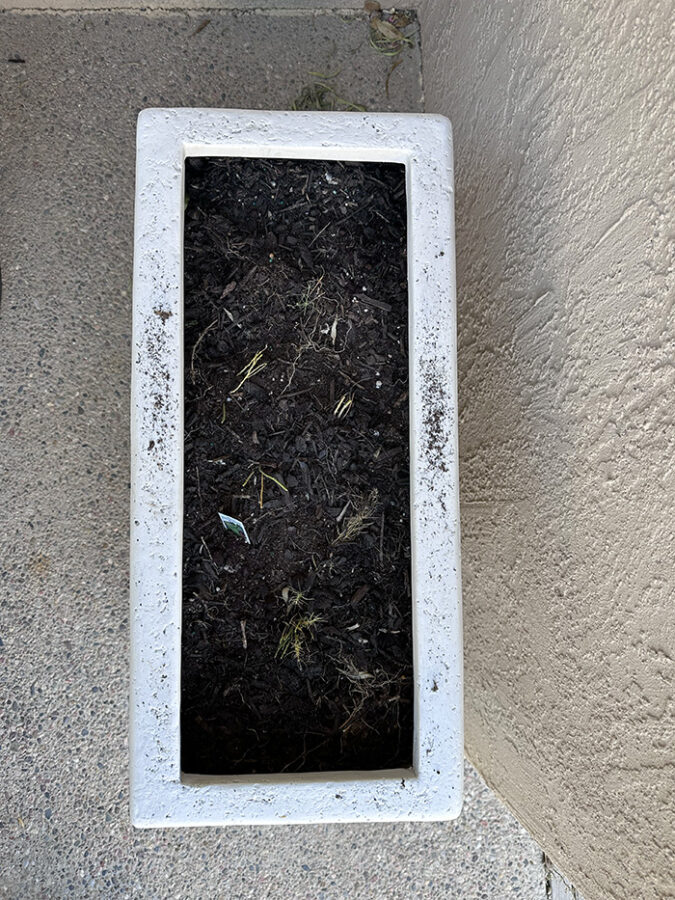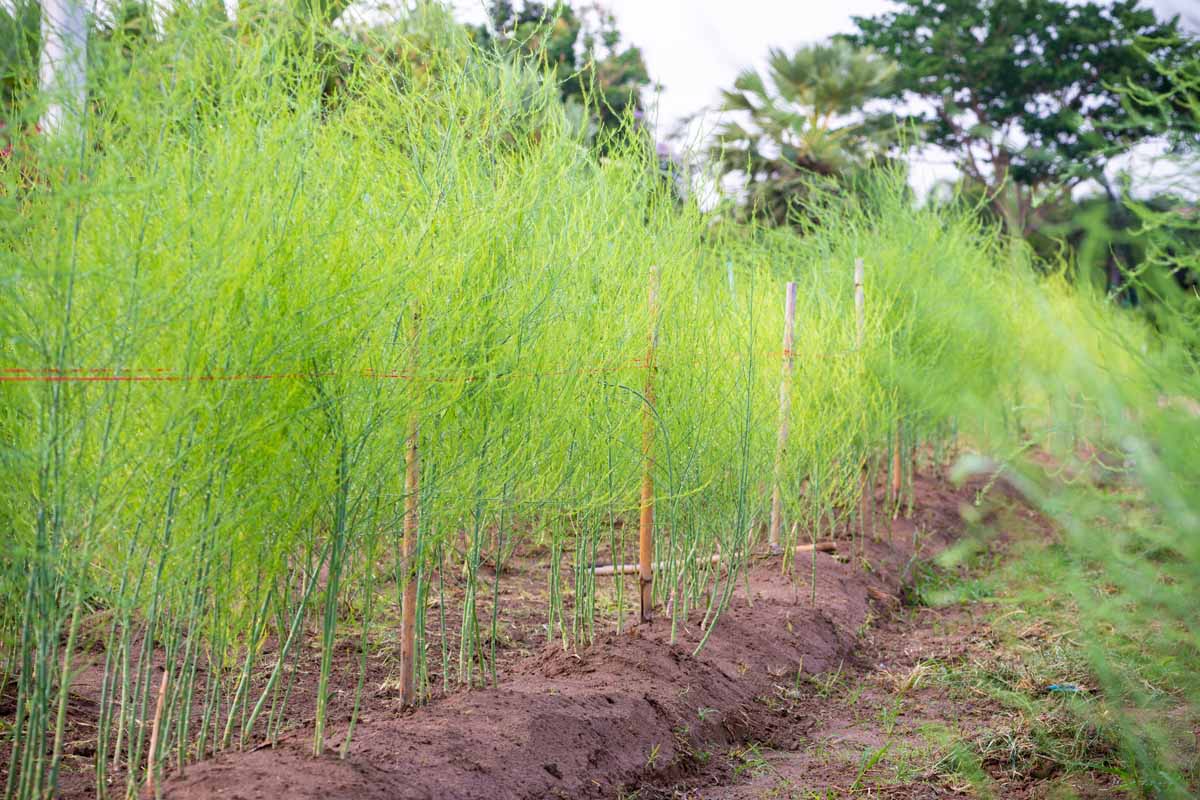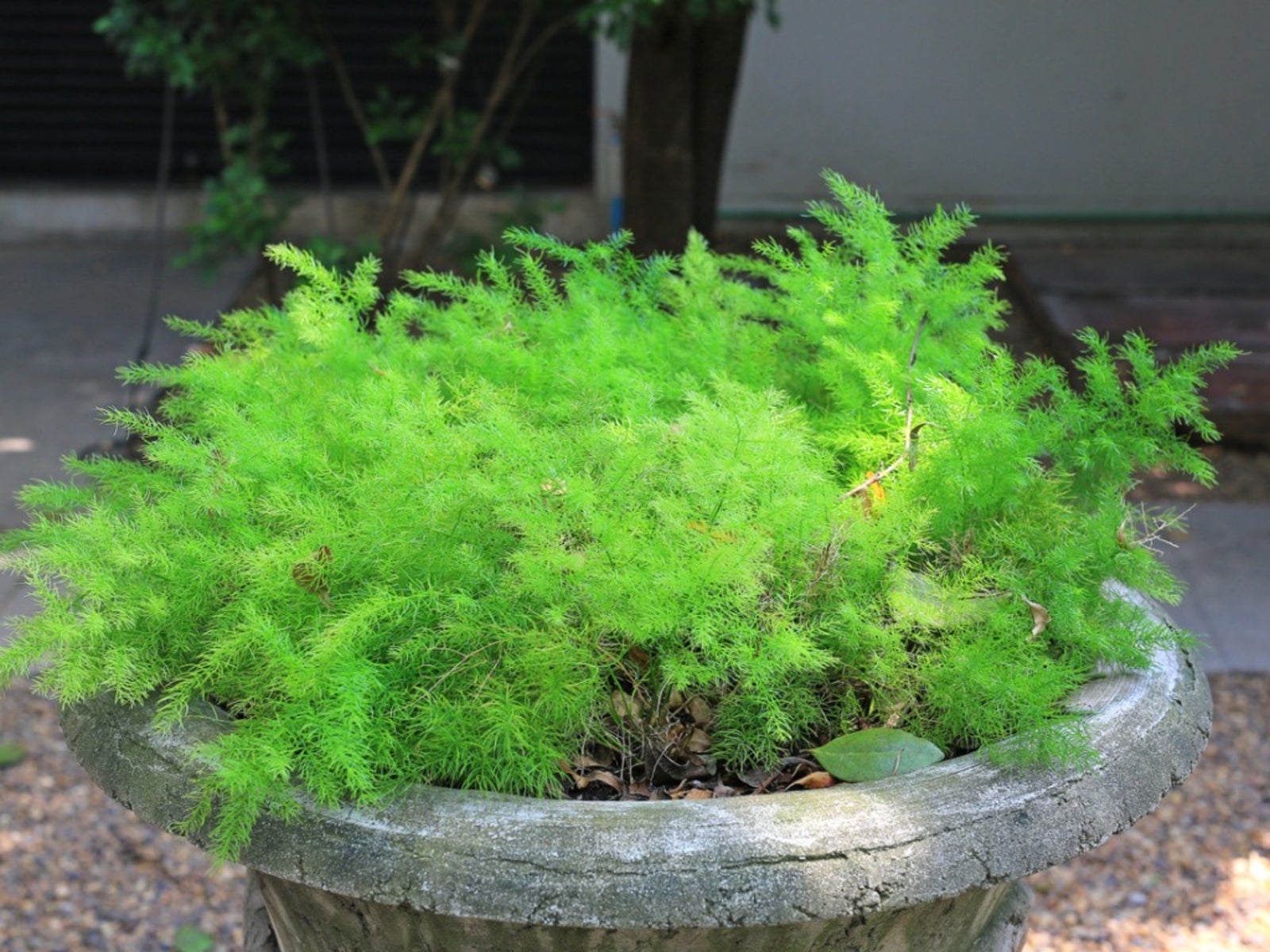Why Winterization is Crucial for Asparagus Ferns
As the winter season approaches, it’s essential to prepare your asparagus ferns for the cold weather. Winterization is a critical process that helps protect the plant from harsh conditions, ensuring its survival and promoting healthy growth in the spring. Asparagus ferns are sensitive to frost, and without proper care, they can suffer from damage or even death. By understanding how to winterize asparagus ferns, you can take the necessary steps to safeguard your plant and enjoy its beauty for years to come.
One of the primary risks associated with not winterizing asparagus ferns is frost damage. When temperatures drop, the plant’s delicate fronds can become brittle and prone to breakage. Additionally, frost can cause the roots to rot, leading to a decline in the plant’s overall health. By taking proactive measures to protect your asparagus fern, you can prevent these issues and ensure a thriving plant come springtime.
Another critical aspect of winterization is preventing pest infestations. As the weather cools, pests like spider mites, mealybugs, and scale can seek shelter on the plant, causing damage and spreading disease. By winterizing your asparagus fern, you can reduce the risk of pest infestations and create a healthier environment for your plant to grow.
Proper winter care can also promote healthy growth in the spring. By reducing foliage and protecting the roots, you can encourage the plant to focus its energy on developing a strong root system. This, in turn, will lead to a more robust and resilient plant that’s better equipped to handle the challenges of the growing season.
By understanding the importance of winterization, you can take the first step in protecting your asparagus fern and ensuring its long-term health. In the following sections, we’ll explore the specific steps you can take to winterize your asparagus fern, including choosing the right time, pruning and cutting back, and mulching and protecting the roots.
Choosing the Right Time to Winterize
When it comes to winterizing asparagus ferns, timing is everything. Choosing the right time to start the winterization process can make all the difference in ensuring the plant’s survival and promoting healthy growth in the spring. So, how do you know when to start winterizing your asparagus fern?
The ideal time to winterize asparagus ferns depends on several factors, including temperature, daylight hours, and soil moisture. In general, it’s best to start winterizing your asparagus fern when the temperature begins to drop and the days get shorter. This is usually around late fall to early winter, when the plant is dormant.
One way to determine when to start winterizing your asparagus fern is to check the temperature. Asparagus ferns typically go dormant when the temperature drops below 50°F (10°C). You can also check the plant’s foliage for signs of dormancy, such as yellowing or browning leaves.
Another factor to consider is daylight hours. Asparagus ferns need at least 6 hours of direct sunlight per day to thrive. During the winter months, the days are shorter, and the sun is lower in the sky. By winterizing your asparagus fern, you can help protect it from the reduced daylight hours and ensure it gets the light it needs to survive.
Soil moisture is also an important factor to consider when winterizing your asparagus fern. Asparagus ferns prefer well-draining soil that is moist but not waterlogged. During the winter months, the soil can become dry and cold, which can cause the roots to rot. By mulching and protecting the roots, you can help retain moisture and regulate soil temperature.
By considering these factors, you can determine the best time to start winterizing your asparagus fern. In the next section, we’ll discuss the importance of pruning and cutting back asparagus ferns before winter, including the benefits of reducing foliage, promoting root growth, and preventing disease.
Pruning and Cutting Back
Pruning and cutting back asparagus ferns is an essential step in preparing them for the cold season. This process helps reduce foliage, promote root growth, and prevent disease. By pruning and cutting back your asparagus fern, you can help ensure its survival and promote healthy growth in the spring.
To prune and cut back your asparagus fern, start by removing any dead or damaged fronds. This will help prevent the spread of disease and encourage healthy growth. Next, cut back the remaining fronds to about 6-8 inches from the ground. This will help reduce the plant’s water loss and prevent damage from harsh winter winds.
When pruning and cutting back your asparagus fern, make sure to use clean and sharp tools. This will help prevent the spread of disease and promote healthy growth. You can use pruning shears or loppers to cut back the fronds, depending on the size of your plant.
Here’s a step-by-step guide on how to prune and cut back your asparagus fern:
1. Remove any dead or damaged fronds from the plant.
2. Cut back the remaining fronds to about 6-8 inches from the ground.
3. Use clean and sharp tools to prevent the spread of disease.
4. Make clean cuts just above a node, where a frond meets the stem.
5. Remove any weak or spindly growth to promote healthy growth.
By following these steps, you can help ensure your asparagus fern is properly pruned and cut back for the winter season. This will help promote healthy growth and prevent common problems.
In the next section, we’ll discuss the importance of mulching and protecting the roots of asparagus ferns during winter, including the benefits of retaining moisture, suppressing weeds, and regulating soil temperature.
Mulching and Protecting the Roots
Mulching and protecting the roots of asparagus ferns is a crucial step in preparing them for the cold season. Mulching helps retain moisture, suppress weeds, and regulate soil temperature, all of which are essential for the plant’s survival and healthy growth.
When choosing a mulch for your asparagus fern, consider using organic materials such as straw, bark chips, or pine straw. These materials are breathable, allowing for air and water to reach the roots, and they also help to retain moisture and suppress weeds.
To apply mulch effectively, start by clearing the area around the plant of any debris or weeds. Then, spread a 2-3 inch layer of mulch around the base of the plant, keeping it a few inches away from the crown. This will help to prevent moisture from accumulating and causing root rot.
In addition to mulching, it’s also important to protect the roots of your asparagus fern from harsh winter conditions. One way to do this is to use a root protector, such as a foam or plastic cover, to insulate the roots and prevent damage from freezing temperatures.
Here are some tips for mulching and protecting the roots of your asparagus fern:
1. Choose an organic mulch that is breathable and helps to retain moisture.
2. Apply a 2-3 inch layer of mulch around the base of the plant, keeping it a few inches away from the crown.
3. Use a root protector to insulate the roots and prevent damage from freezing temperatures.
4. Keep the mulch moist, but not waterlogged, to prevent root rot.
5. Check the mulch regularly to ensure it is not compacted or damaged, and replenish as needed.
By following these tips, you can help to ensure the roots of your asparagus fern are protected and healthy, and that the plant is well-prepared for the cold season.
In the next section, we’ll discuss the steps to bring potted asparagus ferns indoors during winter, including the importance of acclimating the plant to indoor conditions, reducing watering, and providing sufficient light.
Bringing Potted Asparagus Ferns Indoors
As the winter season approaches, it’s essential to bring potted asparagus ferns indoors to protect them from harsh weather conditions. Bringing your asparagus fern indoors can be a bit tricky, but with the right steps, you can ensure the plant’s survival and promote healthy growth.
The first step in bringing your asparagus fern indoors is to acclimate the plant to indoor conditions. This means gradually introducing the plant to indoor temperatures, humidity, and light levels over the course of 7-10 days. Start by moving the plant to a shaded area outdoors, then gradually move it to a brighter location indoors.
Once your asparagus fern is indoors, reduce watering to once a month. Asparagus ferns require less water during the winter months, and overwatering can lead to root rot. Make sure the pot has good drainage holes to prevent waterlogged soil.
Providing sufficient light is also crucial for asparagus ferns indoors. Place the plant near a sunny window or use grow lights to supplement natural light. Asparagus ferns prefer bright, indirect light, so avoid direct sunlight, which can cause scorching.
Here are some additional tips for caring for your asparagus fern indoors:
1. Maintain a consistent temperature between 65-75°F (18-24°C).
2. Keep the plant away from drafts and extreme temperatures.
3. Fertilize sparingly, as asparagus ferns require fewer nutrients during the winter months.
4. Monitor the plant for pests, such as spider mites and mealybugs, and treat promptly if necessary.
5. Prune dead or damaged fronds to maintain the plant’s appearance and promote healthy growth.
By following these steps, you can ensure your potted asparagus fern thrives indoors during the winter months. In the next section, we’ll discuss various outdoor protection methods for asparagus ferns, including the use of burlap, straw, and frost cloth.
Outdoor Protection Methods
When it comes to protecting asparagus ferns from harsh winter conditions, there are several outdoor protection methods that can be effective. These methods can help shield the plant from wind, frost, and extreme temperatures, ensuring its survival and promoting healthy growth in the spring.
One popular outdoor protection method for asparagus ferns is the use of burlap. Burlap is a breathable, natural material that can be wrapped around the plant to protect it from wind and frost. To use burlap, simply wrap it around the plant, securing it with twine or wire. Make sure to leave some space between the burlap and the plant to allow for air circulation.
Another effective outdoor protection method is the use of straw. Straw is a lightweight, breathable material that can be used to mulch around the base of the plant. This helps to retain moisture, suppress weeds, and regulate soil temperature. To use straw, simply spread a 2-3 inch layer around the base of the plant, keeping it a few inches away from the crown.
Frost cloth is another popular outdoor protection method for asparagus ferns. Frost cloth is a lightweight, breathable material that can be draped over the plant to protect it from frost and extreme temperatures. To use frost cloth, simply drape it over the plant, securing it with stakes or weights. Make sure to leave some space between the frost cloth and the plant to allow for air circulation.
Here are some additional tips for using outdoor protection methods for asparagus ferns:
1. Choose a protection method that is breathable and allows for air circulation.
2. Apply the protection method before the first frost, or when temperatures are expected to drop below 25°F (-4°C).
3. Make sure to secure the protection method with twine, wire, or stakes to prevent it from blowing away in the wind.
4. Check the protection method regularly to ensure it is still effective and not damaged.
5. Remove the protection method in the spring, when temperatures are consistently above 40°F (4°C).
By using these outdoor protection methods, you can help ensure your asparagus fern is protected from harsh winter conditions and promote healthy growth in the spring. In the next section, we’ll discuss the importance of post-winter care and maintenance for asparagus ferns.
Post-Winter Care and Maintenance
After the winter season, it’s essential to provide your asparagus fern with proper care and maintenance to promote healthy growth and prevent common problems. Inspecting for damage, pruning dead foliage, and fertilizing are crucial steps in post-winter care.
Start by inspecting your asparagus fern for any damage that may have occurred during the winter months. Check for signs of root rot, pest infestations, or damage from extreme temperatures. If you notice any damage, take action promptly to prevent further damage.
Next, prune dead foliage from the plant. This will help promote healthy growth and prevent the spread of disease. Use clean and sharp pruning tools to remove any dead or damaged fronds, and make sure to disinfect the tools between cuts to prevent the spread of disease.
Fertilizing is also an essential step in post-winter care. Asparagus ferns require a balanced fertilizer that is high in phosphorus to promote healthy root growth. Apply a balanced fertilizer according to the manufacturer’s instructions, and make sure to water the plant thoroughly after fertilizing.
Here are some additional tips for post-winter care and maintenance:
1. Water the plant thoroughly after fertilizing to help the fertilizer absorb into the soil.
2. Provide sufficient light for the plant, but avoid direct sunlight, which can cause scorching.
3. Maintain a consistent temperature between 65-75°F (18-24°C) to promote healthy growth.
4. Monitor the plant for pests and diseases, and take action promptly if you notice any issues.
5. Repot the plant every 2-3 years to provide fresh soil and a larger pot if necessary.
By following these steps, you can help promote healthy growth and prevent common problems in your asparagus fern. In the next section, we’ll discuss common issues that may arise during the winterization process and provide troubleshooting tips and solutions.
Troubleshooting Common Winterization Issues
While winterizing asparagus ferns can be a straightforward process, there are some common issues that may arise. In this section, we’ll discuss some of the most common problems that can occur during the winterization process and provide troubleshooting tips and solutions to help you overcome these challenges.
One of the most common issues that can occur during the winterization process is root rot. Root rot can occur when the roots of the plant are exposed to too much moisture, causing them to rot and die. To prevent root rot, make sure to mulch around the base of the plant and avoid overwatering.
Another common issue that can occur during the winterization process is pest infestations. Pests such as spider mites, mealybugs, and scale can infest the plant and cause damage. To prevent pest infestations, make sure to inspect the plant regularly and treat any infestations promptly.
Inadequate protection is another common issue that can occur during the winterization process. If the plant is not properly protected from harsh winter conditions, it can suffer damage or die. To prevent inadequate protection, make sure to use a combination of mulching, pruning, and outdoor protection methods to protect the plant from wind, frost, and extreme temperatures.
Here are some additional troubleshooting tips and solutions to help you overcome common winterization issues:
1. If you notice any signs of root rot, such as soft or mushy roots, remove the affected roots and treat the plant with a fungicide.
2. If you notice any signs of pest infestations, such as white powdery patches or sticky substance on the leaves, treat the plant with an insecticide.
3. If you notice any signs of inadequate protection, such as damage from wind or frost, provide additional protection to the plant, such as covering it with burlap or bringing it indoors.
By following these troubleshooting tips and solutions, you can help ensure that your asparagus fern is properly winterized and protected from common winterization issues.








